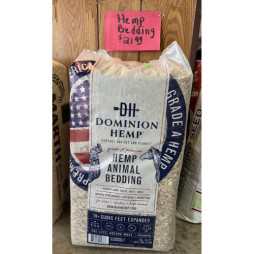{article.name}
Stay Informed
I Adopted a Pet, Now What?

- Share this:
- Share on Facebook
- Pin on Pinterest
- Tweet on Twitter
Adopting a pet is a wonderful experience and there's nothing quite like bringing your new pet home, knowing you are making a happy difference in an animal's life. But after the adoption papers are signed and you walk away with your new pet, what's next?
What to Do After You Adopt a Pet
The right first steps are critical to be sure your newly adopted pet has a happy, healthy life comfortable in its new home. You can make the animal's transition easier when you're ready to welcome a new pet properly.
- Visit the Vet
Even though your new pet is most likely up-to-date on vaccinations and is in good health – reputable shelters, breeders and pet stores make sure of this – it is a good idea to visit your veterinarian as soon as you've adopted a new pet. Your pet should have a complete physical to confirm its health and to let you know if there are any potential problems or specific health concerns you need to be aware of. This will also help your pet learn the veterinarian and start a record for a lifetime of good health care.
- Microchipping Is a Must
If your new pet isn't already microchipped, you should take care of that task right away. It will not hurt your pet, and can make all the difference if your pet escapes or is lost or stolen even years later. With updated microchip information, you can be reunited with your pet quickly and easily. Register the microchip with appropriate local and national databases, and keep your contact information updated as well so your pet can be returned to you.
- Stock Up on Essential Supplies
Hopefully you already have the right supplies on hand before bringing your pet home, but you may have forgotten or overlooked some key needs. Note the brand of food your pet was eating before the adoption, and be sure you have enough to help the animal gradually transition to the diet you want it to have so you can avoid any digestive trouble. You should also have proper bedding, toys, a collar and leash, treats, bowls and other necessities for your pet.
- Pet Proof Your Home
Your new pet will be curious about its home and may explore areas you don't want it to be in, or it may investigate objects that could be unsafe. Take the time to pet proof your home, removing any delicate or dangerous objects from your pet's reach, including house plants, toxic chemicals, electrical cords and other items. Install pet gates as needed to keep your pet out of areas that may not be safe or appropriate. As you learn your pet's behavior, you will learn what other pet proofing steps may be necessary.
- Make Appropriate Introductions
When your pet first comes home, it can be overwhelming to meet too many new people or other pets at once. First be sure your pet knows its way around its new home by introducing it to its bed, potty area and food and water bowls. Introduce other family members and pets slowly and let everyone get accustomed to one another. Within a few days, it is a good idea to introduce your pet to any neighbors or regular visitors as well, but space out these introductions to reduce any stress or anxiety.
- Stay Home for a Few Days
If you can, stay home for a day or two to help your pet adjust before leaving it alone during the workday. It is not necessary for every member of the family to be home all the time, but leaving your pet alone for hours right after adopting it can create feelings of abandonment, which can lead to anxiety and poor behavior. Give both you and your new pet a few days to ease into a typical daily routine, and your pet won't be as shocked or upset by sudden changes.
- Sign Up for Training Classes
Even if your new pet has already been trained and responds to basic commands, new training classes can be helpful for you to establish dominance and for your pet to learn your expectations as well as for you to become comfortable with the animal's signals. The time spent together in training can also help cement your bond and help you both develop a deeper, happier relationship.
Above all, you must be patient and realistic after you adopt a pet. Moving to a new home with a new family is stressful for any animal, and adjusting to new surroundings will take time. It may take several weeks before your pet is fully settled in and relaxed, but if you've taken care to make it feel comfortable and welcome, your newly adopted pet will soon be a happy member of your family.
Special Offers



Comments